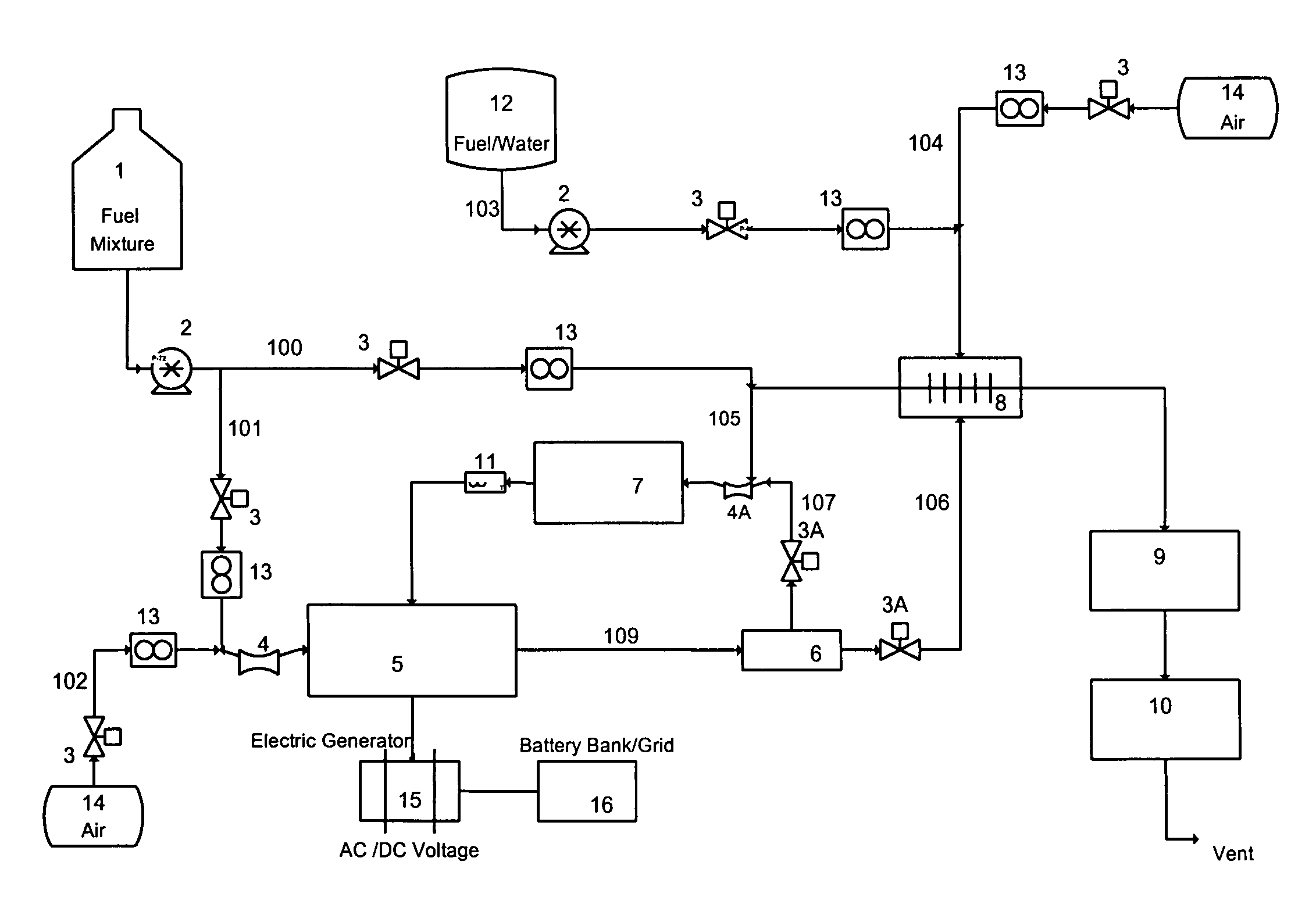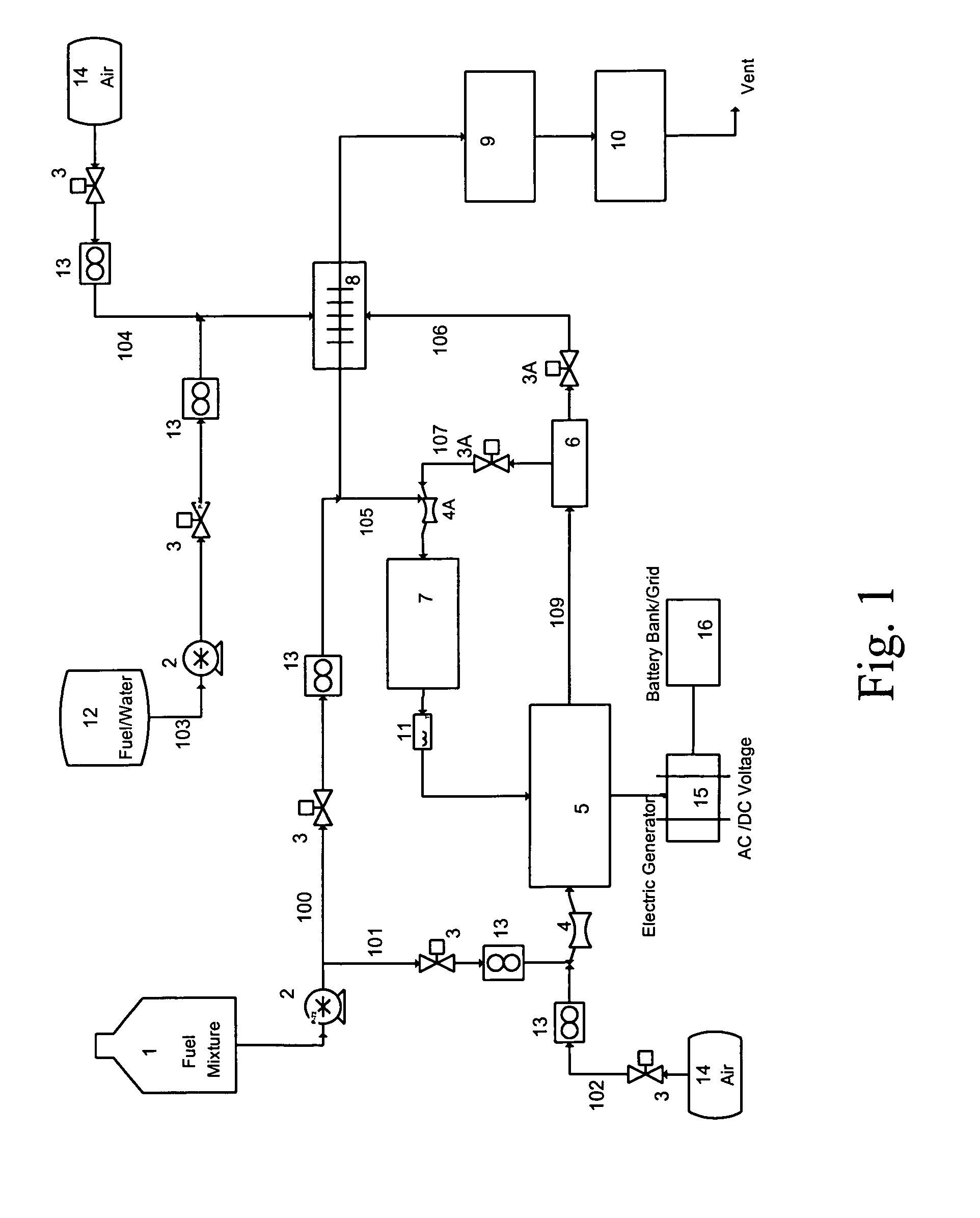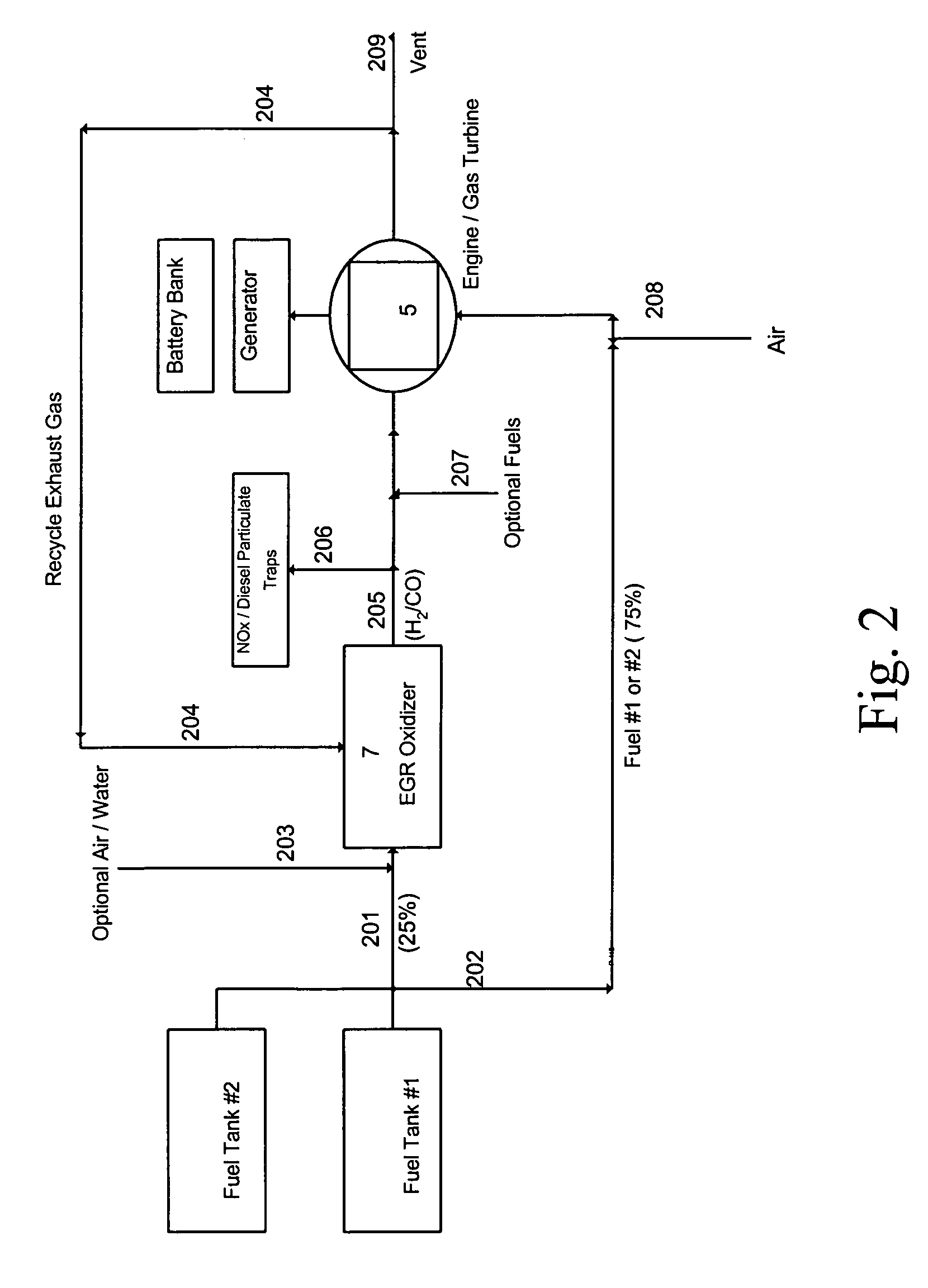Catalytic EGR oxidizer for IC engines and gas turbines
a technology of ic engines and catalysts, which is applied in the direction of machines/engines, bulk chemical production, separation processes, etc., can solve the problems of shortening the catalyst life, reducing the reliability and useful life of the reactor, and producing within a few milliseconds excess reaction heat, so as to improve the catalyst's durability and the effect of operating li
- Summary
- Abstract
- Description
- Claims
- Application Information
AI Technical Summary
Benefits of technology
Problems solved by technology
Method used
Image
Examples
examples
[0079]Depend on the control strategy on the air / fuel ratios, the exhaust gas composition coming from the automobile, small utility or diesel truck engines are different from each other. But normally the exhaust gas comprises approximately 14% steam, 10% CO2, 2, x, unburned hydrocarbons and balance N2. Therefore, to produce H2 and CO by the CPO reactions of the fuels and the recycled exhaust gas, it maybe necessary to inject additional amount of O2 into the EGR Oxidizer to increase the O2 / C ratio. For example, a simple “reed” valve, a carburetor, or a gas flow controller can be installed in the exhaust pipe for this purpose.
[0080]As described previously, catalytic partial oxidations of HC and bio-fuels over the Pt group metal catalysts has been studied over the years by several laboratories, and H2 and CO can successfully be produced at very high space velocities from fuels such as #2 diesel oil, gasoline, natural gas, LPG, jet fuel, ethanol, sugar-water, other bio-fuels etc. Therefo...
PUM
| Property | Measurement | Unit |
|---|---|---|
| temperature | aaaaa | aaaaa |
| temperature | aaaaa | aaaaa |
| temperature | aaaaa | aaaaa |
Abstract
Description
Claims
Application Information
 Login to View More
Login to View More - R&D
- Intellectual Property
- Life Sciences
- Materials
- Tech Scout
- Unparalleled Data Quality
- Higher Quality Content
- 60% Fewer Hallucinations
Browse by: Latest US Patents, China's latest patents, Technical Efficacy Thesaurus, Application Domain, Technology Topic, Popular Technical Reports.
© 2025 PatSnap. All rights reserved.Legal|Privacy policy|Modern Slavery Act Transparency Statement|Sitemap|About US| Contact US: help@patsnap.com



